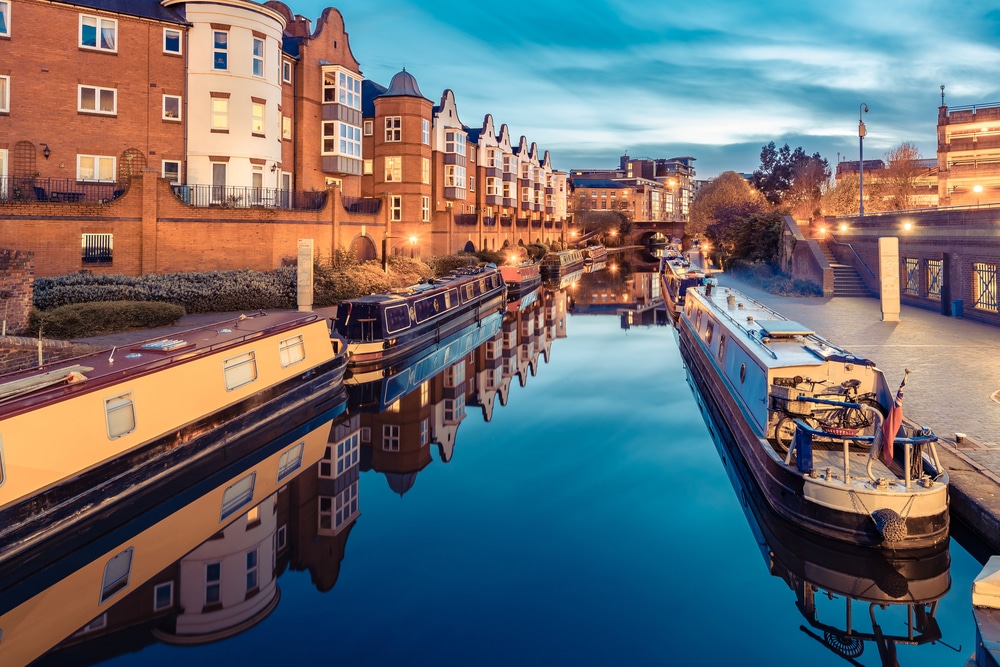Birmingham – the second largest city in Great Britain with a current population of just over 1.1 million has also been the most important economic centre of the Midlands region for a good 250 years. This is where the Industrial Revolution in England began around 1750.
The mushrooming chimneys and the associated air pollution soon gave the area the unflattering nickname “Black Country”. By the beginning of the 20th century, Birmingham had developed into the “City of 1,000 Industries” due to its numerous factories and companies.
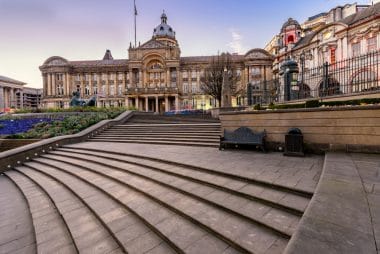
Here, for example, the rails, wagons and locomotives for the expansion of the English railway network were produced. During the World Wars, Birmingham was also the most important British armaments manufacturer. The German bomber raids between 1940 and 1943, notorious as the “Birmingham Blitz”, cost about 5,000 lives and destroyed over 6,000 buildings. After 1945, the city, which still needed a lot of workers, became the preferred destination for immigrants from the Commonwealth. With the gradual decline of British heavy industry from the 1970s onwards, Birmingham slowly lost its importance as an industrial metropolis.
The grand plan to redevelop Birmingham has worked out successfully
In the decades that followed, the city mastered the structural change away from coal and steel to trade and services, which had been difficult for a long time, in a comparatively exemplary manner. Since the early 1990s, numerous derelict former industrial sites throughout Birmingham have been repurposed and repurposed.
With the construction of the “International Convention Centre” (1991) on Broad Street and Centenary Square as well as the development and redevelopment of the neighbouring Brindleyplace district from around 1995 onwards, Birmingham received an invigorating economic impulse. The opening of the “Mailbox Birmingham” shopping centre (2000) on Commercial Street and the redevelopment of the inner-city shopping area “Bull Ring” (2003) also ensured the settlement of well-known international companies and new jobs.
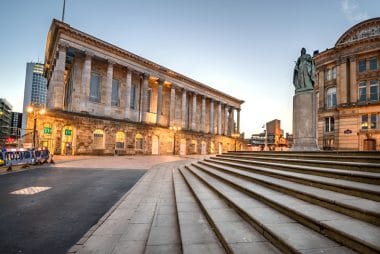
Thanks to the innovative urban development concept “Big City Plan” adopted in 2008, extensive investments were made in the historic centre “City Centre Core” as well as in the Eastside, Digbeth, Southside and Highgate and Westside and Ladywood. This resulted in attractions that are particularly important for local tourism, such as the office and hotel complexes “The Cube” and “Snowhill”, the public library “Library of Birmingham” and the almost three-hectare local recreation area “Eastside City Park”.
The pretty jewellery district, numerous museums worth seeing and culture galore
An example of the ambitious and successful realignment of urban policy in Birmingham’s boroughs is also the renaissance of the traditional goldsmiths’ quarter, the “Jewellery Quarter” in the north-west city centre, which is characterised by many red brick houses, from the early 2000s onwards.
Here, where a good 40 percent of jewelry in the United Kingdom is still produced, artists, museums and galleries as well as restaurants and shops have since settled. For example, the well-visited “Museum of the Jewellery Quarter” on Vyse Street and the “St. Paul’s Gallery” with the world’s largest collection of signed music albums on Northwood Street are recommended, as well as the “RBSA Gallery” of the locally based “Royal Birmingham Society of Artists” on Brook Street.
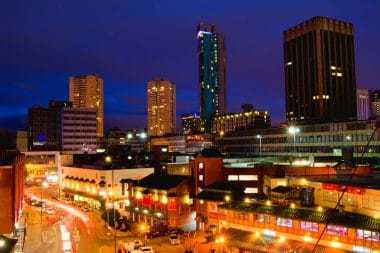
Among the nine buildings of the “Birmingham Museums Trust” is the “Think Tank Birmingham Science Museum”, which opened in 2001 and is also worth seeing in the huge cultural complex “Millennium Point” on Curzon Street. Visitors to Birmingham can admire the wide range of historic architectural forms at the early 17th-century Jacobean country estate “Aston Hall” on Trinity Road and in the former 19th-century workers’ dwellings “Back-to-Back-Houses” in Inge Street and Hurst Street.
Where people used to toil, creative concepts for the future are now being created
Also like a journey back in time to the city’s past is a detour to the “Gun Quarter” north of the city center between Shadwell Street, Steelhouse Lane and Loveday Street. The first firearms were demonstrably manufactured here from 1630 onwards, and until the beginning of the 1960s, numerous relevant manufacturers had their headquarters in the quarter.
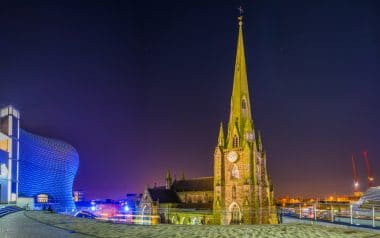
Today, the “Gewehrviertel” is considered a promising future insider tip despite numerous empty buildings. Tourists can learn about the history of the area in the former firing office and now museum of weaponry, the “Birmingham Proof House” on Banbury Street. The exhibition in the listed watermill “Sarehole Mill” from 1771 on Cole Bank Road in the south-eastern district of Hall Green is equally dedicated to the eventful, eventful and long industrial history of the city.
The Warwick Bar area at the confluence of the artificial waterways “Grand Union Canal” and “Digbeth Branch Canal” in the Eastside district, which is mainly used by the creative industries, was an important ship lock system in the 19th century. Also primarily used by cultural and media companies as well as for events, concerts and events is the former pudding factory “Custard Factory” from 1906 on Gibb Street.
Birmingham was and is a rich breeding ground for pop and rock music
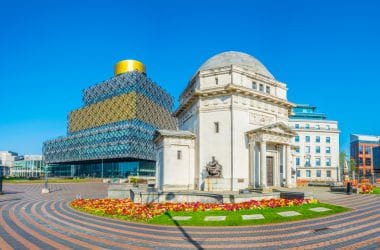
In addition to its many historic sights, the city of Birmingham also has a whole range of modern and contemporary attractions as well as leisure and entertainment options for its approximately one million guests every year.
The local music scene, which is one of the most prolific in the UK and has produced world-famous groups such as The Spencer Davis Group, Electric Light Orchestra and Black Sabbath, as well as Judas Priest, UB40, Dexys Midnight Runners and Fine Young Cannibals, is now considered one of the city’s biggest crowd pullers, not only among young people.
Live concerts by bands from Birmingham and the surrounding area, England and around the world are often held at the Digbeth Institute, the Midlands Arts Centre in Cannon Hill Park in Edgbaston, the Arena Birmingham in King Edwards Road and the CBSO Centre. Good addresses for exuberant and varied nightlife are Broad Street (Westside), the “Chinese Quarter” (Southside) around Hurst Street, Pershore Street and Ladywell Walk, and the Digbeth district known as the “Irish Quarter”.
The city’s festival calendar is well filled, the regional specialties are rustic
Regular events with the most visitors to Birmingham include the Birmingham Tattoo Military Music Festival in November, the Birmingham International Carnival every two years in August, the Birmingham Pride parade at Easter, Saint Patrick’s Day in March and the Fierce International Performance Festival in May.
The “Supersonic Festival” in July, the “Swingamajig Festival” in May and the “ValeFest” in June also attract many visitors. From the end of August to the beginning of September 2022, Birmingham is expected to host the “22nd Commonwealth Games” with about 5,000 athletes from about 73 nations. Participants and visitors to this traditional event will then be able to enjoy culinary specialties typical of the city, such as the hearty pâté “Brummie bacon cakes”, the meat dish “Faggot” made from pork offal and the “Groaty pudding” made with cereal groats, leeks and beef. Another great opportunity to sample classic dishes from Birmingham and the surrounding area is the Colmore Food Festival in Victoria Square, which is held every July.


